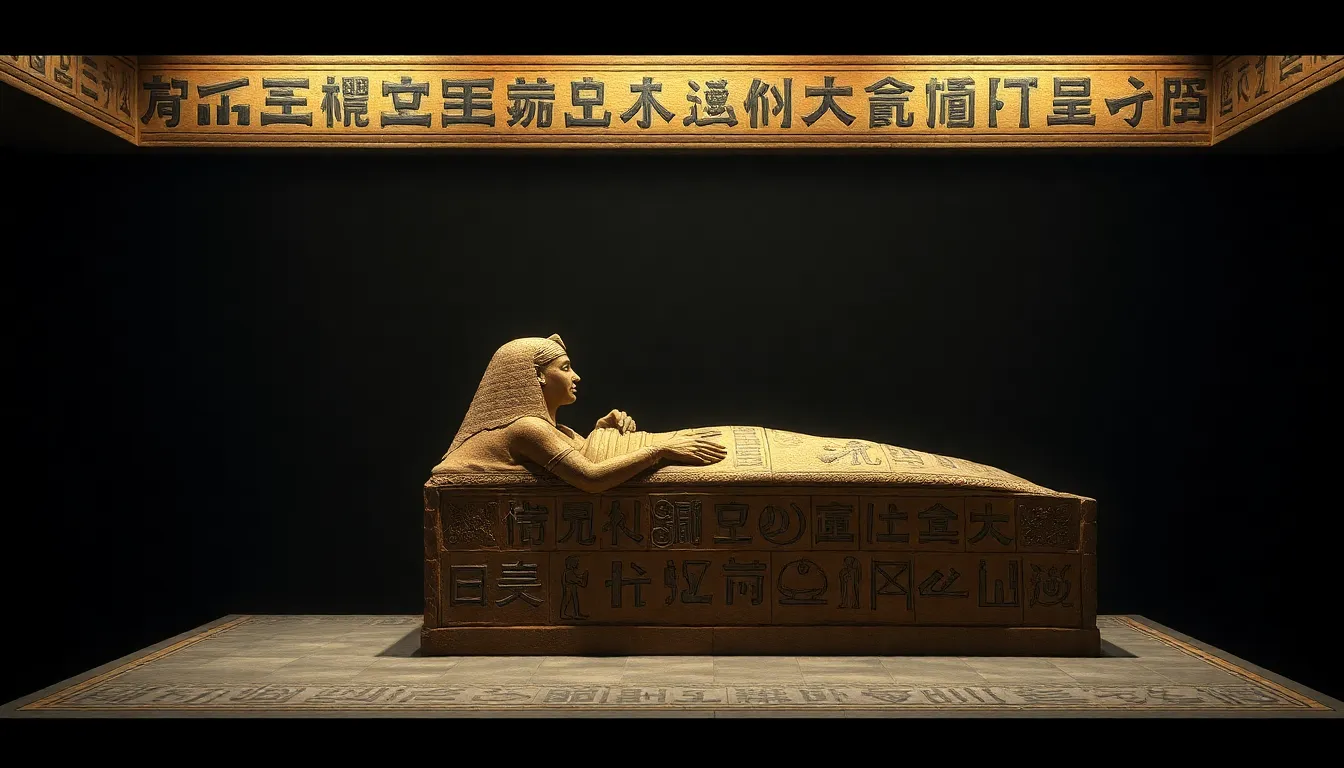The Amduat: A Funerary Text for the Deceased
I. Introduction
The Amduat, often translated as “That Which Is in the Afterworld,” is one of the most significant funerary texts in ancient Egyptian mythology. It serves as a guide for the deceased as they navigate the afterlife, providing essential knowledge and protection during their journey through the realms of the dead.
This ancient text holds a crucial place in the funerary practices of ancient Egypt, representing the beliefs and rituals surrounding death and the afterlife. The Amduat illustrates the Egyptians’ complex understanding of life after death and the importance of ensuring a safe passage for the deceased.
This article aims to delve into the historical context, structural composition, and the rich symbolism of the Amduat, exploring its significance in ancient Egyptian culture and its lasting legacy in modern scholarship.
II. Historical Context
The origins of the Amduat can be traced back to the New Kingdom period of ancient Egypt, around 1550-1070 BCE. It is primarily found in royal tombs, particularly those of pharaohs, indicating its importance for the elite in society.
The Amduat is closely related to other funerary texts such as the Pyramid Texts and the Coffin Texts, which also provide guidance and protection for the deceased. However, the Amduat is unique in its detailed account of the journey through the afterlife, emphasizing the challenges and dangers that one must overcome to achieve eternal life.
Throughout different dynasties, the Amduat evolved in its content and form, reflecting changes in religious beliefs and practices. The text became increasingly elaborate, with more intricate illustrations and interpretations emerging during the later periods of ancient Egyptian history.
III. Structure and Composition of the Amduat
The structure of the Amduat is organized into twelve sections, each corresponding to one of the twelve hours of the night. This layout symbolizes the journey of the sun god Ra as he travels through the underworld, offering a parallel to the deceased’s journey.
- Key Components:
- Each hour features a unique set of challenges and deities.
- Illustrations depict the various realms and entities encountered.
The text is rich in symbolism and imagery, using intricate hieroglyphs and illustrations to convey its teachings. The use of vibrant colors and detailed scenes enhances the understanding of the afterlife journey, making it visually captivating and spiritually significant.
IV. The Journey of the Deceased
In ancient Egyptian belief, the afterlife was a continuation of life on earth, filled with both challenges and rewards. The Amduat outlines the deceased’s journey through the twelve hours of the night, where they encounter various obstacles and divine beings.
Each hour presents a distinct setting and set of deities that guide and protect the deceased:
- Hour One: The deceased enters the underworld.
- Hour Two: Encounters with serpents and protection from deities.
- Hour Three: The judgment process begins.
- Hour Four to Twelve: Various trials leading to rebirth and union with Osiris.
Key deities such as Osiris, the god of the afterlife, and Anubis, the god of mummification, play pivotal roles in guiding the deceased through this perilous journey, ensuring their safe passage and eventual resurrection.
V. Rituals and Practices Associated with the Amduat
The Amduat is intricately linked to various funerary rites and practices in ancient Egypt. These rites were designed to prepare the deceased for their journey into the afterlife, ensuring they were equipped with the necessary knowledge and protection.
- Funerary Rites:
- Rituals were performed to honor the deceased and invoke the favor of the gods.
- Offerings of food, drink, and goods were made to sustain the deceased in the afterlife.
- Mummification:
- The process of mummification preserved the body for the afterlife.
- Amulets and spells from the Amduat were often placed within tombs to protect the deceased.
- Tomb Inscriptions:
- The Amduat was frequently inscribed on tomb walls, serving as a guide for the deceased.
- Illustrations from the text adorned the tombs, depicting the journey through the afterlife.
VI. Interpretations and Symbolism
The Amduat is rich in symbols that convey profound meanings related to the afterlife and the nature of existence. Key symbols include:
- **The Sun**: Represents life, rebirth, and the cyclical nature of existence.
- **Serpents**: Often symbolize danger and transformation, embodying the challenges faced by the deceased.
- **The Duat**: Represents the realm of the dead and the journey one must undertake.
Theological implications of the Amduat’s teachings highlight the moral responsibilities of the deceased, emphasizing the importance of leading a virtuous life to ensure a favorable judgment in the afterlife. Insights gleaned from the Amduat contribute to a broader understanding of ancient Egyptian cosmology, illustrating the interconnectedness of life, death, and the divine.
VII. The Amduat in Modern Scholarship
The rediscovery of the Amduat has significantly impacted archaeology and Egyptology. As scholars excavate tombs and study ancient texts, the Amduat has emerged as a critical resource for understanding ancient Egyptian beliefs about death and the afterlife.
Current interpretations of the Amduat vary among scholars, with ongoing debates regarding its origins, purpose, and significance. The text continues to influence contemporary scholarship, offering insights into the complexities of ancient Egyptian religion and culture.
VIII. Conclusion
The Amduat remains a vital component of ancient Egyptian funerary practices, symbolizing the intricate beliefs surrounding death and the afterlife. Its teachings about the journey of the deceased and the associated rituals have left a lasting legacy that continues to resonate in modern scholarship.
Reflecting on the Amduat’s enduring significance invites us to appreciate the intersection of art, religion, and culture in ancient Egypt. This funerary text not only served as a guide for the deceased but also as a testament to the rich spiritual life of one of history’s most fascinating civilizations.




